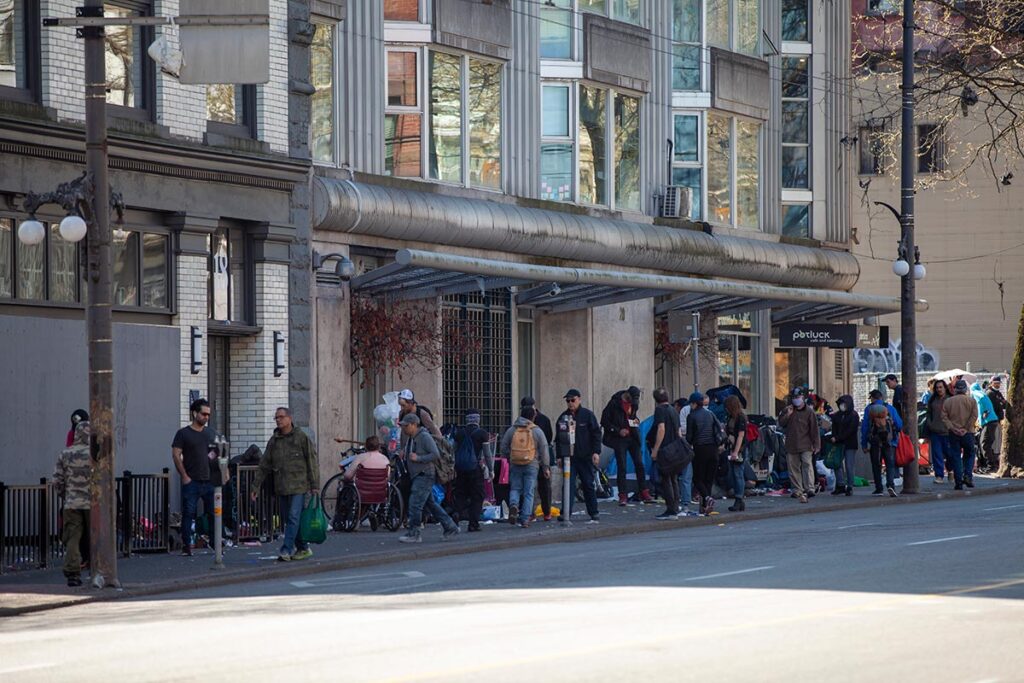Vancouver’s Downtown Eastside (DTES) is often portrayed as a neighborhood drowning in despair, with headlines focusing on drug use, crime, and poverty. But these challenges are symptoms of a deeper, more insidious issue—chronic neglect by government and society. While nearby areas like Gastown and Chinatown receive significant funding and attention, the DTES has been left to deteriorate, its economic potential stifled by systemic disinvestment. The result? A neighborhood trapped in a vicious cycle of poverty, vacant storefronts, and social crises.
The Hidden Heart of the DTES
Despite the DTES’s grim reputation, it’s a community with a vibrant local business scene and resilient residents. Social enterprises, small businesses, and community-driven initiatives have long fought to bring stability and prosperity to the area. However, many of these ventures have been suffocated by the lack of support from local and provincial governments. Entrepreneurs face a brutal reality: high commercial property taxes, scarce resources, and a general lack of basic infrastructure, such as functioning street lighting and well-maintained sidewalks.
The economic neglect of the DTES contrasts sharply with the government’s lavish investments in surrounding areas. Recent projects like the pedestrian-friendly overhaul of Gastown’s Water Street and significant funds earmarked for revitalizing Chinatown only highlight the growing divide. While Gastown and Chinatown flourish, the DTES continues to sink deeper into economic despair, as if deliberately left behind.
The Infrastructure Problem: A Tale of Two Worlds
Walking through the DTES and then turning into Gastown feels like stepping into another world. In Gastown, city-funded improvements like freshly paved streets, new lighting, and pedestrian-friendly designs have turned it into a tourist haven. Meanwhile, just blocks away in the DTES, crumbling sidewalks, broken streetlights, and vacant storefronts dominate the landscape.
The lack of investment in infrastructure has direct consequences. Business owners struggle to attract customers to an area perceived as unsafe and unwelcoming. Community members, many of whom are unhoused or living in precarious conditions, are left to navigate streets devoid of basic amenities. Even law enforcement officers, who used to be a more visible presence, now stay in their vehicles for fear of safety, further eroding the sense of community security.
This abandonment extends to property owners, many of whom are forced to charge high rental fees due to commercial property taxes that are over three times higher than residential taxes. Faced with skyrocketing costs, many owners either pass these expenses on to their tenants—often small business owners—or choose to leave their properties vacant, further contributing to the decline.
The Economic Spiral of Disinvestment
One of the most visible signs of the DTES’s economic collapse is the number of vacant storefronts that line Hastings Street. These empty spaces are more than just eyesores; they represent missed opportunities for local entrepreneurs and the loss of potential jobs for a community already struggling with poverty. As more businesses close or leave the area, fewer jobs are available, creating a self-reinforcing cycle of economic decline.
Vacant storefronts also reinforce the negative stereotypes about the DTES. With fewer businesses and less economic activity, potential investors are less likely to see the area as a viable opportunity. This leads to a further lack of investment, deepening the divide between the DTES and neighboring areas like Gastown and Chinatown.
A Deliberate Neglect?
The stark contrast between the investment in Gastown and Chinatown and the neglect of the DTES raises troubling questions. Is the disinvestment in the DTES a failure of policy, or is it a deliberate decision to let the area fester in its challenges?
The city and province have poured millions into revitalizing surrounding neighborhoods, turning them into hubs for tourism and commerce. Yet the DTES, which sits in the heart of Vancouver, has been largely overlooked. This selective investment only amplifies the sense of abandonment felt by its residents and businesses.
This neglect has forced the DTES to shoulder a disproportionate burden of the city’s social issues. The concentration of social services in the area, coupled with the lack of support from surrounding communities, means that the DTES has become a magnet for those struggling with homelessness, addiction, and mental health challenges. Meanwhile, other neighborhoods in Vancouver benefit from this concentrated effort, while refusing to contribute to solutions.
The Path Forward: What Needs to Change
The economic woes of the DTES cannot be solved overnight, but deliberate investment in infrastructure, social services, and local businesses would be a good start. The area doesn’t just need more social programs—it needs tangible economic development initiatives that support local entrepreneurs and attract new businesses. This means investing in basic infrastructure improvements like lighting, street repairs, and community spaces that can foster a sense of safety and belonging.
Moreover, property tax reforms could help alleviate the financial burden on local businesses and property owners, encouraging more investment in the area. Reducing commercial property taxes, or offering tax incentives for businesses willing to invest in the DTES, could help reverse the cycle of economic decline.
At the same time, surrounding communities need to step up and share the responsibility for addressing Vancouver’s social crises. A more equitable distribution of social services, housing initiatives, and support programs across the city would reduce the concentration of poverty and addiction in the DTES, allowing the neighborhood to rebuild itself.
A Neighborhood in Need of Care
The DTES is more than just a collection of headlines about drug use and crime—it’s a community of people trying to survive and thrive despite systemic neglect. The government’s failure to invest in the neighborhood, both economically and socially, has trapped it in a cycle of disinvestment and decline. While nearby areas like Gastown and Chinatown enjoy the benefits of millions in public funding, the DTES continues to crumble under the weight of its challenges.
But it doesn’t have to be this way. By investing in infrastructure, supporting local businesses, and spreading the responsibility for social services across Vancouver, the city can begin to heal the wounds of the DTES. It’s time to stop turning a blind eye and start building a future where the Downtown Eastside can once again become a vibrant, thriving part of Vancouver.
What do you think? Should the DTES receive more investment, or is the current focus on Gastown and Chinatown justified? Join the conversation in the comments below.
DOWNTOWNEASTSIDE.ORG is a collective author account used by several DTES contributors to discuss key issues and events in the neighbourhood. Articles under this authorship reflect diverse perspectives from those directly connected to the community. If you’d like to reach a specific contributor, please contact us via email.





Leave a Comment